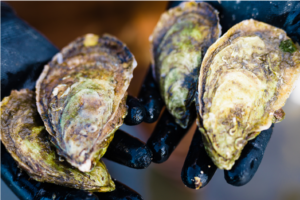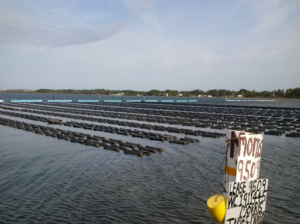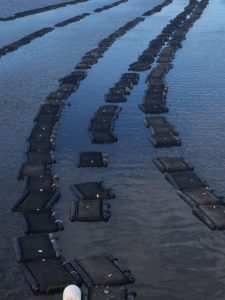Shellfish
go.ncsu.edu/readext?646567
en Español / em Português
El inglés es el idioma de control de esta página. En la medida en que haya algún conflicto entre la traducción al inglés y la traducción, el inglés prevalece.
Al hacer clic en el enlace de traducción se activa un servicio de traducción gratuito para convertir la página al español. Al igual que con cualquier traducción por Internet, la conversión no es sensible al contexto y puede que no traduzca el texto en su significado original. NC State Extension no garantiza la exactitud del texto traducido. Por favor, tenga en cuenta que algunas aplicaciones y/o servicios pueden no funcionar como se espera cuando se traducen.
Português
Inglês é o idioma de controle desta página. Na medida que haja algum conflito entre o texto original em Inglês e a tradução, o Inglês prevalece.
Ao clicar no link de tradução, um serviço gratuito de tradução será ativado para converter a página para o Português. Como em qualquer tradução pela internet, a conversão não é sensivel ao contexto e pode não ocorrer a tradução para o significado orginal. O serviço de Extensão da Carolina do Norte (NC State Extension) não garante a exatidão do texto traduzido. Por favor, observe que algumas funções ou serviços podem não funcionar como esperado após a tradução.
English
English is the controlling language of this page. To the extent there is any conflict between the English text and the translation, English controls.
Clicking on the translation link activates a free translation service to convert the page to Spanish. As with any Internet translation, the conversion is not context-sensitive and may not translate the text to its original meaning. NC State Extension does not guarantee the accuracy of the translated text. Please note that some applications and/or services may not function as expected when translated.
Collapse ▲In North Carolina shellfish such as clams and oysters have been a staple in our diets for hundreds of years. Today traditional oyster roasts are still popular and there is a growing demand for shellfish in resteraunts across the east coast.
While wild shellfish have been harvested from the coastal waters of North Carolina for hundreds of years, they have also been culltivated. NC has allowed the use of public waters to commercially grow shellfish since 1858, given that the producer has obtained a lease to do so from the N.C. Division of Marine Fisheries Shellfish Lease Program.
In North Carolina commercial shellfish aquaculture is focased on the cultivation of oysters and clams. Typically, clam seeds are planted on the bottom of the lease in prepared plots and then covered and protected by a mesh covering. Oysters can be cultivated in the same way, by planting oyster shells on the bottom of the lease and then inroducing oyster larve. However many NC Oyster producers have started to grow their oysters in the water column.
This free flow system involves placing oyster seeds into either floating cages or cages suspended of the water bottom. While more labor intensive this second technique yiels consistently sized singular oysters free of grit.
Cultivated Shellfish have many benifites for both the producer and the enviroment around them. Becuase shellfish are filter feeders, when they are cultivated in coastal waters they recieve thier nutrients from the water flowing through the system and so require no additional food. Culltivated shellfish cannot be over harvested and relieve pressure on wild shellfish populations.
In 2016 the United States produced 36.6 million pounds of oysters (including Eastern oysters), valued at $192 million. In 2017, the commercial value of cultivated North Carolina oysters was nearly $2 million, while cultivated clams were valued at about $200,000. Matriculture in NC is expected to grow to $100 million, with a gate value of $33 million by 2030.
Additional resouces on Shellfish Production:
NC Shellfish Growers Association
NC Shellfish Sanitation Program
NCCOS Costal Aquaculture Planning Portal (CAPP)
Oysters:
SRAC 7305: Eastern Oysters
SRAC 0432: The Cultivation of American Oysters
SRAC 4300: Extensive Culture of Crassostrea virginica in the Gulf of Mexico Region
SRAC 4302: Oyster Hatchery Techniques
SRAC 4308: Off-Bottom Culture of Oysters in the Gulf of Mexico
SRAC 4311: High-Density Rearing of Oyster Larvae in Flow-Through Systems
NOAA’s Fishwatch: Eastern Oyster
State of the Oyster: Progess Report
Farming Coastal Waters: Applied Research Supports Oyster Growers
Clams:
SRAC 0433: Biology and Culture of the Hard Clam (Mercenaria mercenaria)







